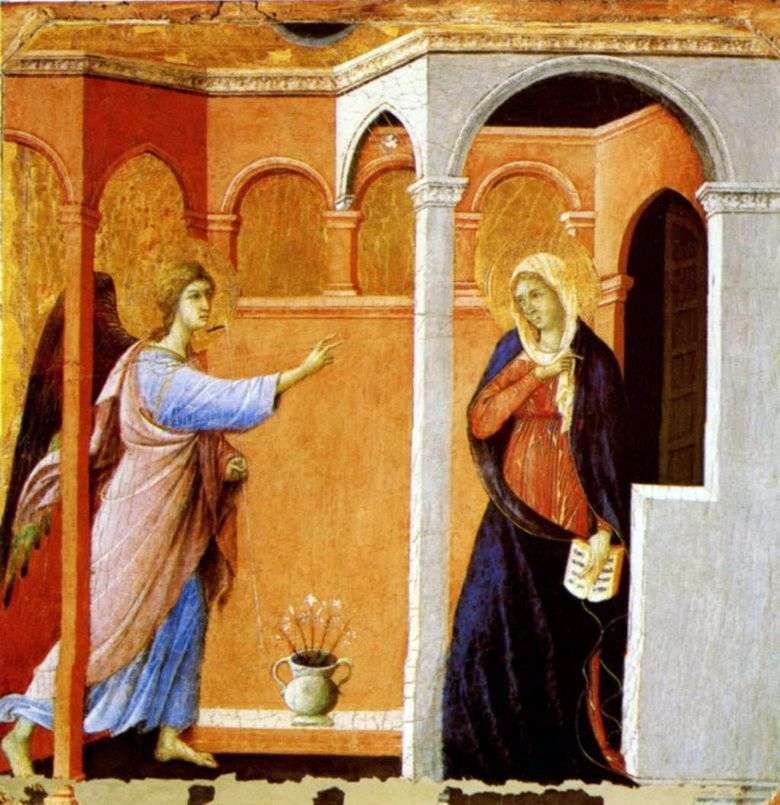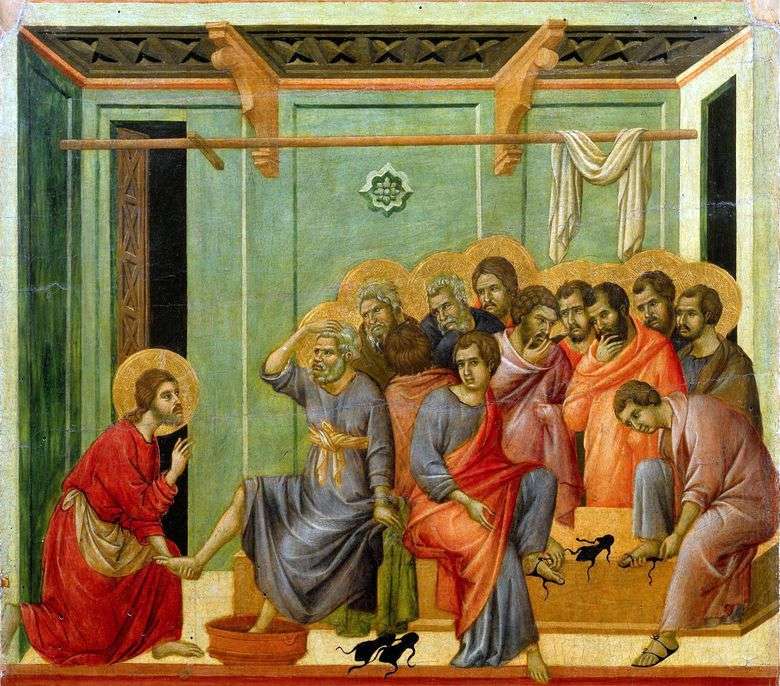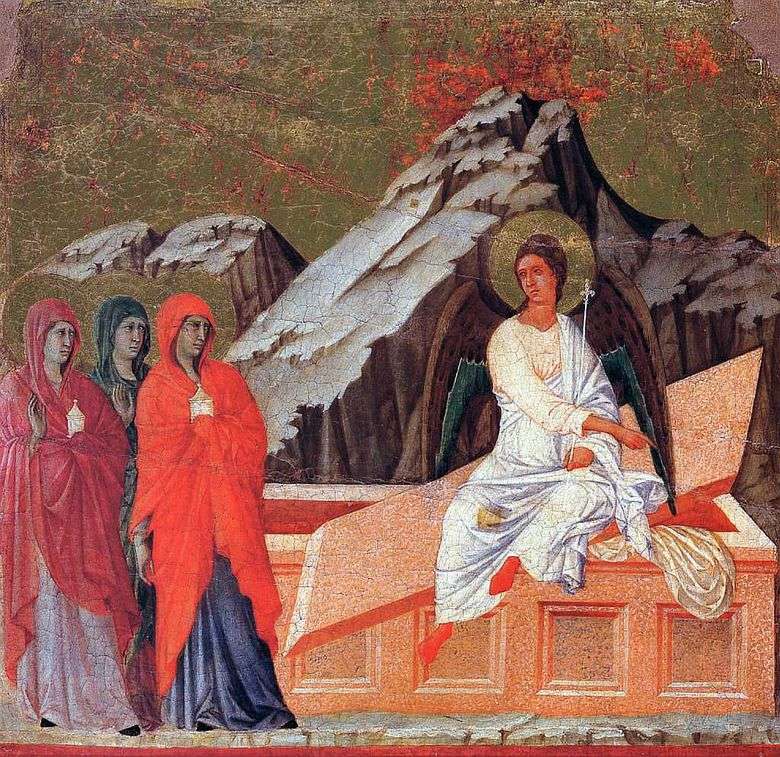
This small painting was part of the composition of Maeste, “Duccio, the image of the main altar of the Siena Cathedral.” This is the first of the seven prelude paintings that tell about the childhood of Christ, which follows the traditions of Byzantine iconography, as indicated by the arrangement of the figures, their movements, clothing and hair patterns.
However, the picture radiates a light, fresh and immediate atmosphere of Gothic. The scene does not occur against the backdrop of a schematic architectural wings, but in the loggia of one of the Siena Gothic houses. The depth of space is emphasized by a low pedestal behind the figures, on which stands a vase with a bouquet of lilies, symbolizing the purity of Mary. The pedestal and the vase are written in a foreshortening somewhat from above, while the loggias and the wooden ceiling are from the bottom and left. The half-open door leaf behind Maria’s back is also designed to emphasize the realism of the environment.
Angel quietly, heartily welcomes Mary. His attire, the airiness of the figure, the scepter with the lily and the welcome movement of the right hand – all this answers the canons of Byzantine iconography, as well as the fact that Mary receives the angel standing. And naturally falling creases of clothes, some elongation of figures, spontaneity, sincerity of feelings and, first of all, a new interpretation of picturesqueness are characteristic features of the already gothic art of Duchto, which opened a new era in painting.
It is also new that the Madonna’s head is covered with a white kerchief, and not with a blue cloak, a mophorion, as in Byzantine images and pictures of Duchento. A loose, even carelessly flowing handkerchief is a perfect example of the gothic pictorial language of Duccio.
 Washing feet by Duccio di Buoninsegna
Washing feet by Duccio di Buoninsegna Madonna with angels and saints (Maesta) by Duccio di Buoninsegna
Madonna with angels and saints (Maesta) by Duccio di Buoninsegna Maesta. The Healing of the Blind by Duccio di Buoninsegna
Maesta. The Healing of the Blind by Duccio di Buoninsegna Myrrh-bearers at the grave of the Lord by Duccio di Buoninsegna
Myrrh-bearers at the grave of the Lord by Duccio di Buoninsegna La Anunciación – Duccio di Buoninsegna
La Anunciación – Duccio di Buoninsegna Madonna Rucellai by Duccio di Buoninsegna
Madonna Rucellai by Duccio di Buoninsegna Lavado de pies – Duccio di Buoninsegna
Lavado de pies – Duccio di Buoninsegna Esposas portadoras de mirra en el Santo Sepulcro – Duccio di Buoninsegna
Esposas portadoras de mirra en el Santo Sepulcro – Duccio di Buoninsegna